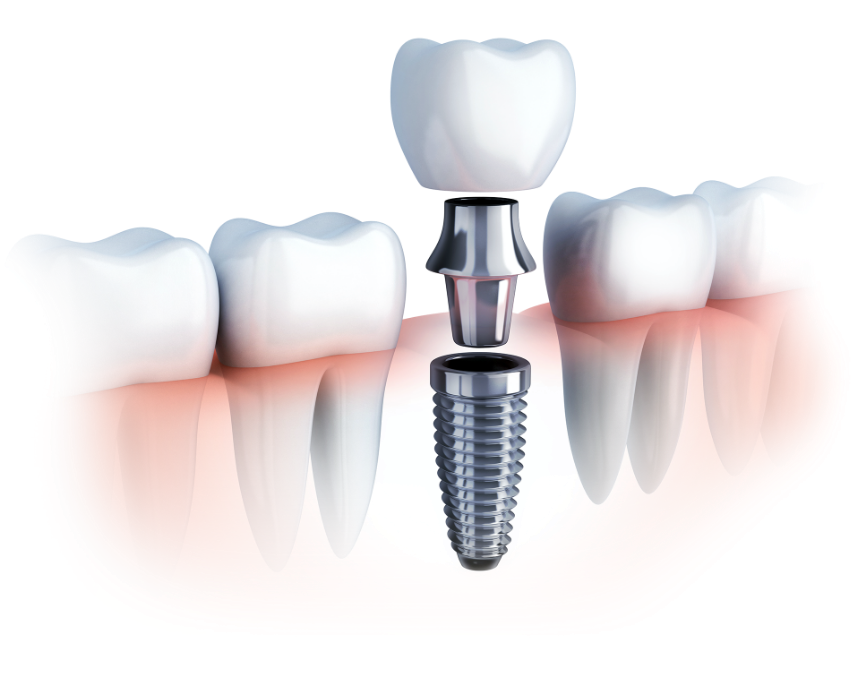Cheap Dental Implants Holland MI - What are dental Implants? Types, procedures, and more
Dental Tooth Implant Walker MI - Guide to Dental Implants: A Popular Option for Tooth Replacement
The journey toward dental implants begins with an intensive assessment of the jawbone's condition. When there is insufficient bone density to assist an implant, click resources bone grafting becomes a vital procedure to recreate a steady foundation. Understanding how a lot bone grafting is needed their website for dental implants significantly influences the treatment plan, timeline, and total success rate.
The amount of bone grafting required is dependent upon multiple elements, including the extent of bone loss, the implant's dimension, and the specific location inside the mouth. In circumstances of significant bone loss due to periodontal diseases, trauma, or prolonged tooth loss, extra extensive grafting could additionally be essential. Conversely, if the bone loss is minimal, a smaller graft may suffice.
Dental Implants Wyoming MI - Dental Implants - an overview
The evaluation process typically entails imaging research similar to X-rays or 3D scans, allowing the dental professional to visualise the bone structure (Affordable Dental Implants Near Me Muskegon Heights MI). These photographs assist in figuring out the quality and quantity of current bone. If the bone is deemed insufficient, the dentist will then outline the suitable grafting procedures
Grafting could be sourced from varied areas. Autografts, which contain harvesting bone from the patient's personal body, are sometimes deemed the gold normal. These provide wonderful integration with the existing bone however come with the downside of further surgery. Other options embrace allografts, which use donor bone, and synthetic supplies designed to mimic natural bone. Each choice has its own implications on therapeutic and success rates.
After figuring out the necessary quantity of bone grafting, the dental professional will create a tailor-made plan for the patient. This plan might embody the timing of bone grafting in relation to the implant placement. In some instances, a graft may be performed concurrently with the implant surgery. Alternatively, in more difficult scenarios, a separate healing interval is indicated.
Healing timelines differ primarily based on the individual's health, the extent of grafting, and the kind of graft used. Generally, the healing of a bone graft takes several months earlier than an implant may be placed. During this time, bone regeneration occurs, resulting in a steady base for the implant.
Cheap Dental Implants Walker MI - Learn More About Your Implants Treatment
Patients often wonder concerning the risks associated with bone grafting. While complications such as infection or graft failure are possible, these occasions are comparatively uncommon. Adhering to post-operative care instructions and attending follow-up appointments minimize risks and promote healing.
Once the bone has adequately healed, the dentist assesses the graft's success by evaluating the bone density and stability. If everything seems favorable, the following steps toward placing the dental implant can commence. The success of this subsequent step largely hinges on the standard of the bone graft and its integration with the encompassing bone.
Cost issues play an necessary function within the decision-making course of. The expense of bone grafting varies based mostly on materials used, the complexity of the case, and geographic location. It is important for patients to discuss finances upfront to avoid surprising payments later within the remedy.
Implant Dental Muskegon Heights MI - Dental Implants Tooth Replacement
Also, sufferers should have practical expectations regarding the timeline and outcomes. Many elements can affect how much bone grafting is required and its total effectiveness. A collaborative strategy involving the affected person and the dental team not only ensures readability but also enhances the probabilities of a profitable outcome.

Maintaining good oral hygiene and regular dental visits following the process is vital. These practices can prevent issues and make positive that both the graft and the implant stay steady over time. The ongoing relationship with a dental professional is essential, particularly in the months following the procedures.
In conclusion, understanding how a lot bone grafting is required for dental implants encompasses a multi-faceted approach that considers bone quality, grafting sorts, healing time, and general affected person health. The balance between attaining the specified aesthetic and functional outcomes while minimizing risks and issues is on the heart of dental implant procedures. The journey could also be intensive, but a well-planned strategy maximizes the possibilities for a successful, long-lasting result in restorative dental work.
- Determining the quantity of bone grafting required for dental implants usually hinges on the preliminary bone density and volume of the patient's jawbone.
- Each affected person's case is exclusive; factors such as earlier extractions, periodontal disease, or trauma can affect the necessity for grafting.
- A 3D imaging scan is typically conducted to assess the exact dimensions of the obtainable bone and inform the grafting technique.
- The type of dental implant placement—immediate or delayed—may dictate the amount of bone grafting needed for stability and integration.
- Different kinds of graft supplies, corresponding to autografts, allografts, or synthetic options, can impact how much grafting materials is needed.
- Assessing the patient's total health, age, and way of life habits can have an result on the therapeutic process, influencing graft quantity requirements.
- The depth and placement of the implant can necessitate varying amounts of graft material to secure optimal outcomes.
- Successful integration of the dental implant typically depends on adequate bone density, resulting in a tailor-made grafting method for every particular person.
- Consultation with an oral surgeon will present a clearer estimate of the bone grafting wanted primarily based on complete evaluations and imaging outcomes.
- Post-grafting therapeutic time varies; thus, a cautious analysis is important to determine the ultimate quantity of grafting required for profitable implantation.undefinedHow much bone grafting is needed for dental implants?
Implants Dental Implants Grandville MI - Dental Implants Advantages
What is bone grafting and why is it needed for dental implants?undefinedBone grafting is a surgical procedure that provides bone or bone-like material to the jawbone. It is important for dental implants when the existing bone is insufficient to assist the implant, making certain stability and long-term success.
How do I know if I need a bone graft for dental implants?undefinedYour dentist or oral surgeon will consider your jawbone via x-rays or 3D imaging to find out its density and quantity. If they discover that you lack sufficient bone, they'll recommend a bone graft earlier than continuing with the dental implant.
Dental Implant Dentures Grandville MI - Dental Implants - Missing Teeth - Dentures
What factors influence the amount of bone grafting needed?undefinedFactors include the dimensions and site of the implant website, the health and density of present bone, and particular person therapeutic capability (Dental Implants Whole Mouth Norton Shores MI). These elements assist the dentist decide the suitable amount of graft material needed
Are there different types of bone grafts used for dental implants?undefinedYes, there are several varieties, including autografts (from your own body), allografts (from a donor), xenografts (from animals), and synthetic graft supplies. Each sort has unique advantages and can be chosen based mostly on individual patient wants.
Implant Dental Grandville MI - What are dental Implants? Types, procedures, and more
How long does the bone grafting process take?undefinedThe duration varies based mostly on the complexity of the grafting course of and the extent of the area treated. Generally, a bone grafting process can take wherever from 30 minutes to a few hours, depending on the particular circumstances.
What is the recovery time after a bone graft for implants?undefinedRecovery instances can differ, however usually, preliminary therapeutic might take a number of weeks, while complete integration of the graft with the bone can take a number of months. Your dentist will provide a customized timeline based mostly on your state of affairs.

Will I expertise pain after the bone grafting procedure?undefinedSome discomfort is common after a bone graft, however it's usually manageable with prescribed pain medicine. Most sufferers report that pain diminishes considerably inside a few days.
Dental Implant Jenison MI - Frequently Asked Questions
How does bone grafting affect the general dental implant timeline?undefinedBone grafting could prolong the overall timeline for receiving dental implants, as it requires a therapeutic interval before implants can be positioned. This can add a quantity of months to the process but is essential for a profitable implant placement.

Are there risks associated with bone grafting for dental implants?undefinedLike any surgical process, bone grafting carries some risks, corresponding to infection, graft failure, or issues associated to anesthesia. However, when performed by an experienced skilled, these risks are typically low.
Can I really have dental implants positioned immediately after a bone graft?undefinedIn many cases, dental implants can't be positioned immediately after a bone graft due to the need for the graft to combine into the present bone. However, some methods, like immediate loading, might permit for this under particular conditions. Your supplier will advise you on the greatest option based mostly on your circumstances.